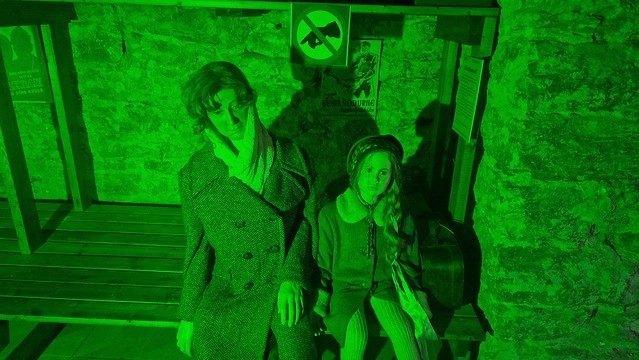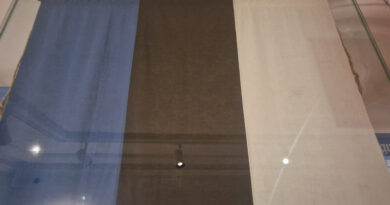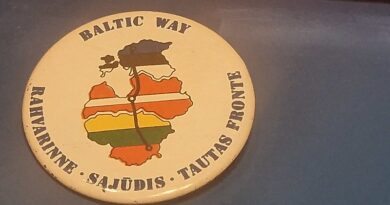Tallinn Trip – Bastion Tunnels
Built in the 17th and 18th centuries, the tunnels were an integral part of Tallinn’s formidable defence system. As cannons and firearms became increasingly powerful, traditional medieval walls were no longer sufficient protection so they went underground. The Bastion Tunnels snaked through the city’s earthen fortifications, connecting various bastions and allowing soldiers to move undetected, transport ammunition, and even launch surprise attacks. Since then, they have been used in numerous different ways throughout the generations.
The warning about not slipping.
But I was more worried about the sign warning of no wi-fi or mobile signal. It sounded a very dangerous place that I wouldn’t be spending much time in.
Ross, Steve and I trekked down the stairs and wondered where Bev and Susanna were. It transpired that they were still visiting the museum as we’d missed a bit out, but my loyal blog readers needn’t worry as we returned to the museum that afternoon to ensure we didn’t go without seeing what the young ladies had.
It looked rather exciting. Signage explained that the tunnels had been extensively renovated between 2004 and 2007 as they had filled with junk and parts had flooded. They removed 800 cubic metres of stones and dirt whilst installing new ventilation and fire safety systems.
The tunnels were used unofficially for a while by partying punks and there were even small-scale concerts that were held down here.
And also by the homeless. It couldn’t have been very pleasant, but at least it would have offered some shelter. There are numerous sightings of ghosts down here, although I suspect the naturally eerie surroundings of the whole arrangements somewhat add to that. They must have a fair number of rodents floating about the place though, and for a while the tunnels were used by a family of foxes who must have used some initiative to get in.
The tunnels provided potential refuge for any nuclear war which might have broken out, something which didn’t look unlikely in the 1960s. A whole new set of air ventilation had to be put in at this stage just in case residents would have been forced to live down here for some time.
Some Soviet leaders to remind visitors about the constant threat of war.
The text on the banner says “AU TÖÖLE!” in Estonian, which translates to “HONOUR TO WORK!” or “GLORY TO LABOUR!” in English. This phrase reflects Soviet-era propaganda themes emphasising the value of labour and work to support society, or, more precisely perhaps, to support the wealthy elites.
I thought initially that this was a ghost, but it was Ross.
The tunnels were used to protect locals from the air raids of the Second World War.
This is Metropolitan Arseni, an important religious figure in Estonian Orthodox history. He opposed many of the reforms made by Catherine the Great and he was punished by being held in the tunnels as a prisoner until his death in 1772. There are some rumours that he was walled up, but these seem fanciful and he was just imprisoned in a more traditional manner.
It’s a fascinating piece of history and I’m pleased that they’ve made such efforts to drain and repair the tunnels to make them accessible. There is more than in the above photos as the next stage of the tunnels goes to the carved stones museum, more of those in a later post.















